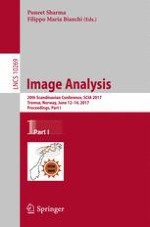2017 | OriginalPaper | Buchkapitel
Supervised Approaches for Function Prediction of Proteins Contact Networks from Topological Structure Information
verfasst von : Alessio Martino, Enrico Maiorino, Alessandro Giuliani, Mauro Giampieri, Antonello Rizzi
Erschienen in: Image Analysis
Aktivieren Sie unsere intelligente Suche, um passende Fachinhalte oder Patente zu finden.
Wählen Sie Textabschnitte aus um mit Künstlicher Intelligenz passenden Patente zu finden. powered by
Markieren Sie Textabschnitte, um KI-gestützt weitere passende Inhalte zu finden. powered by
